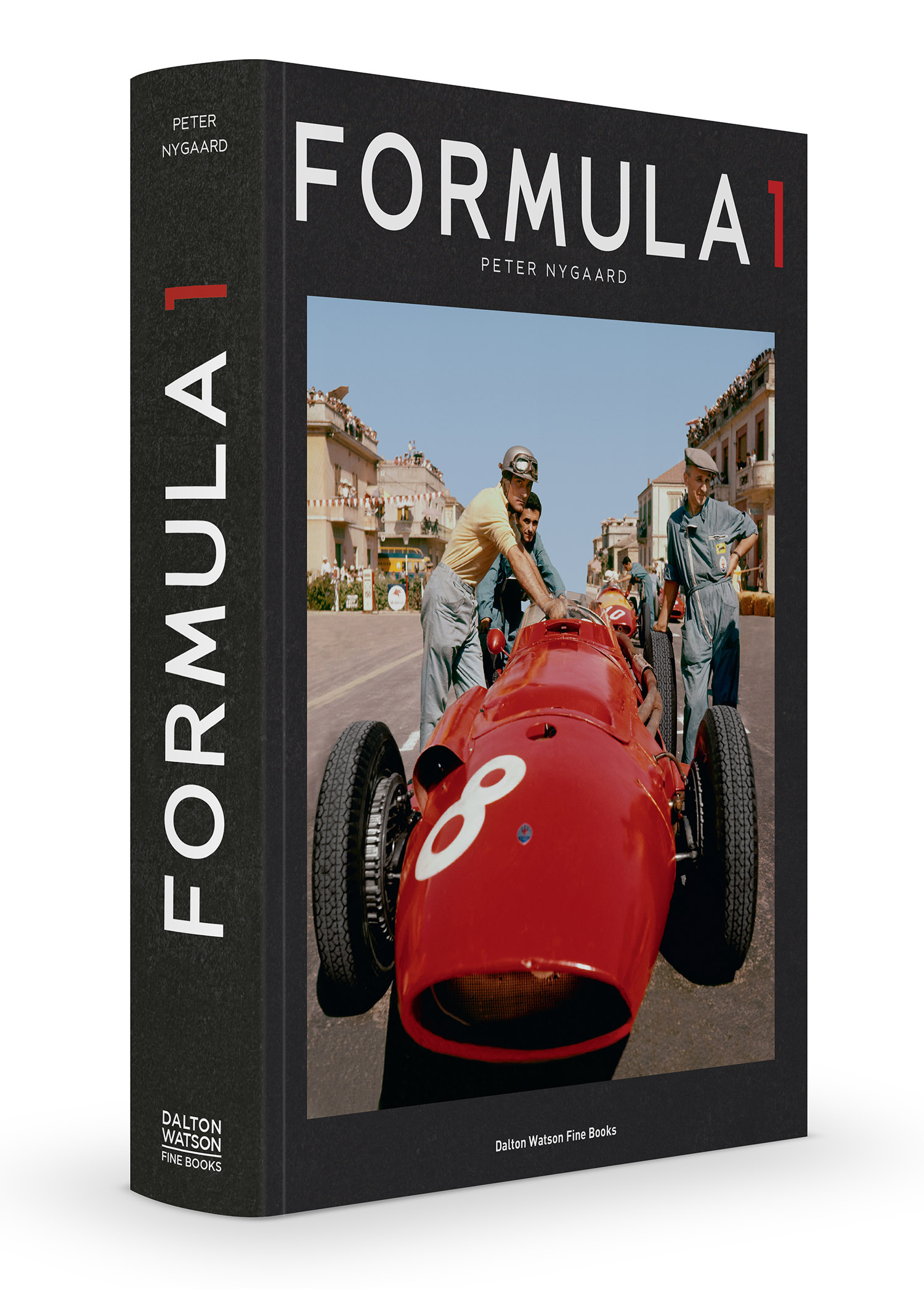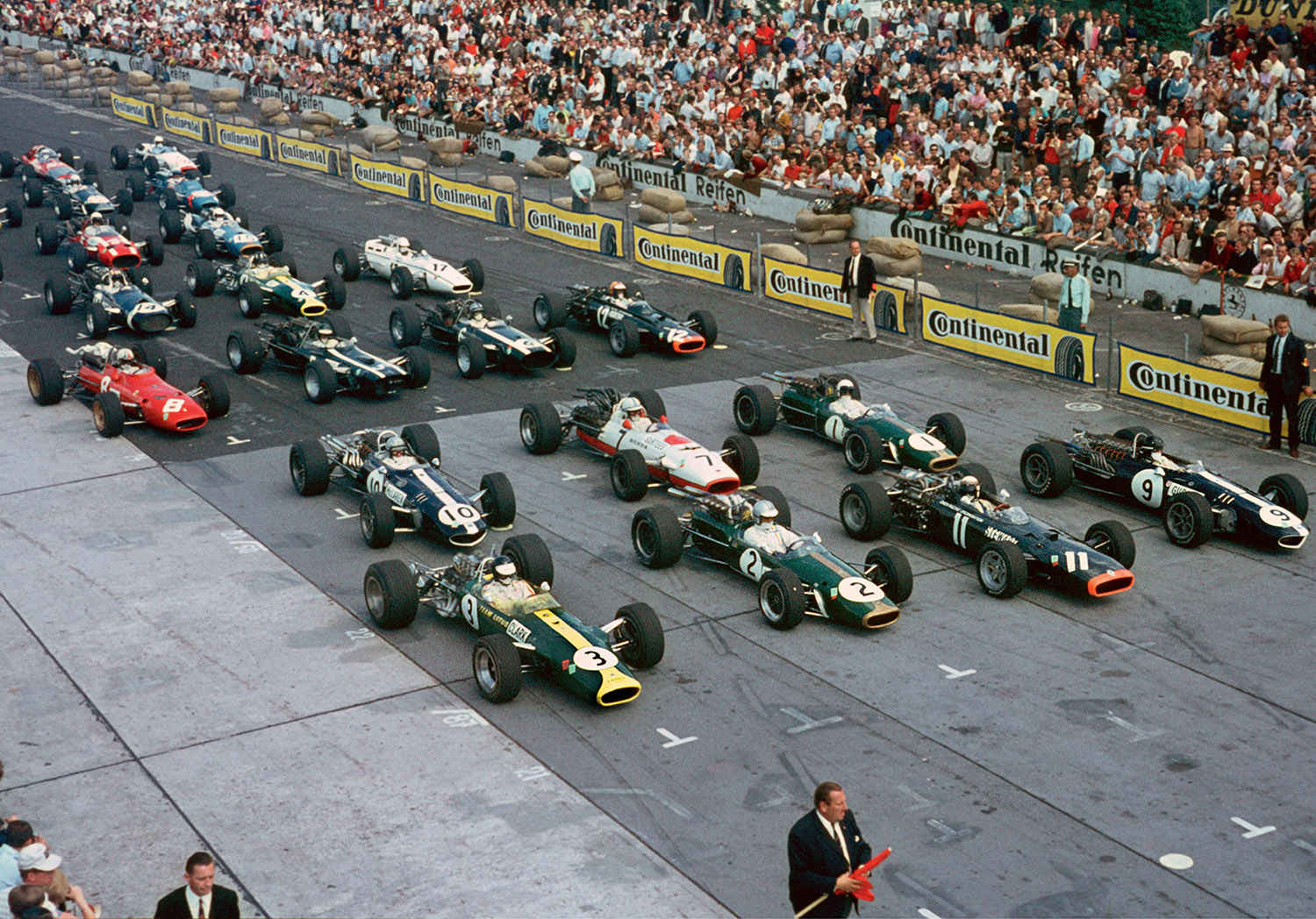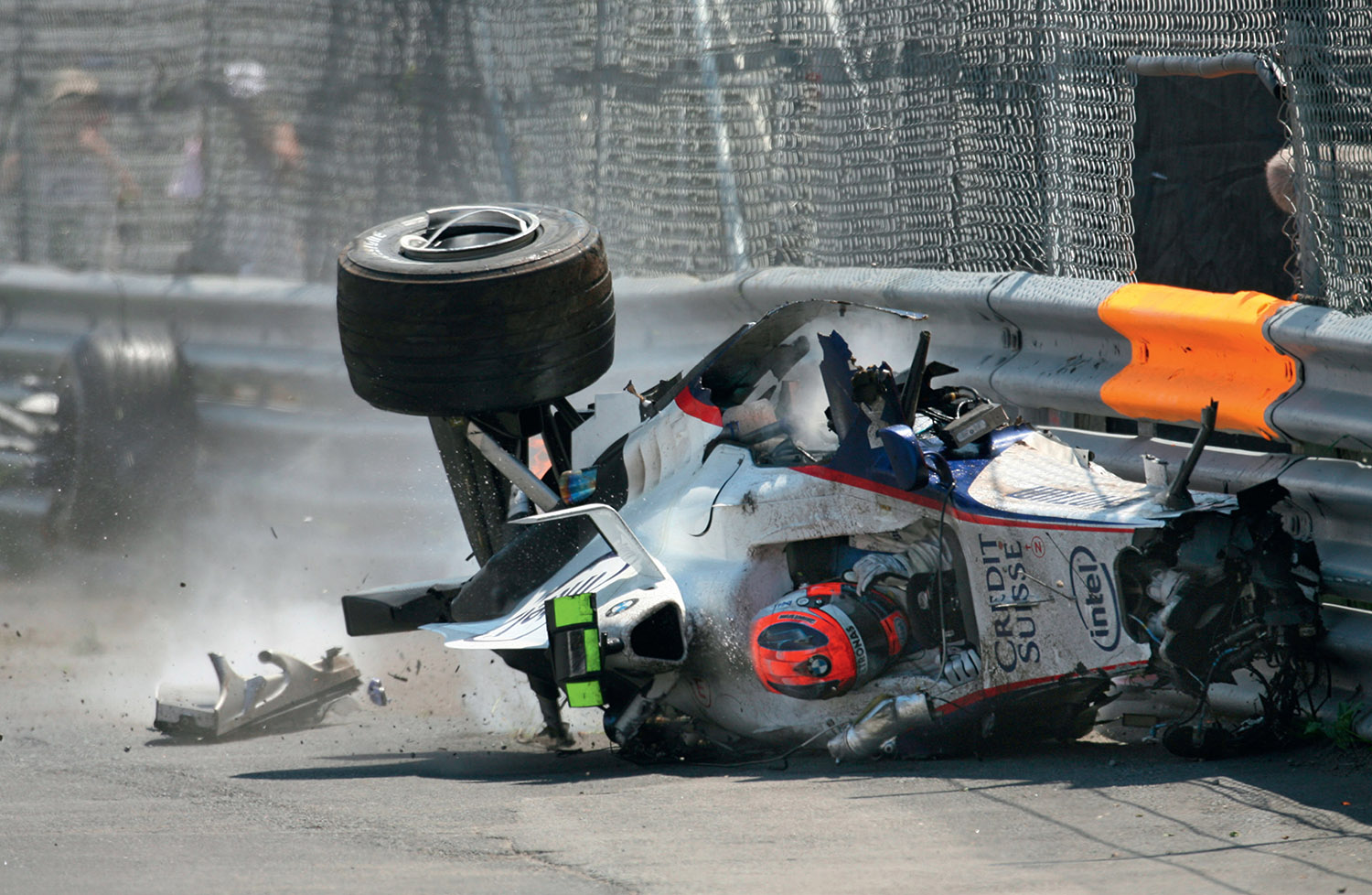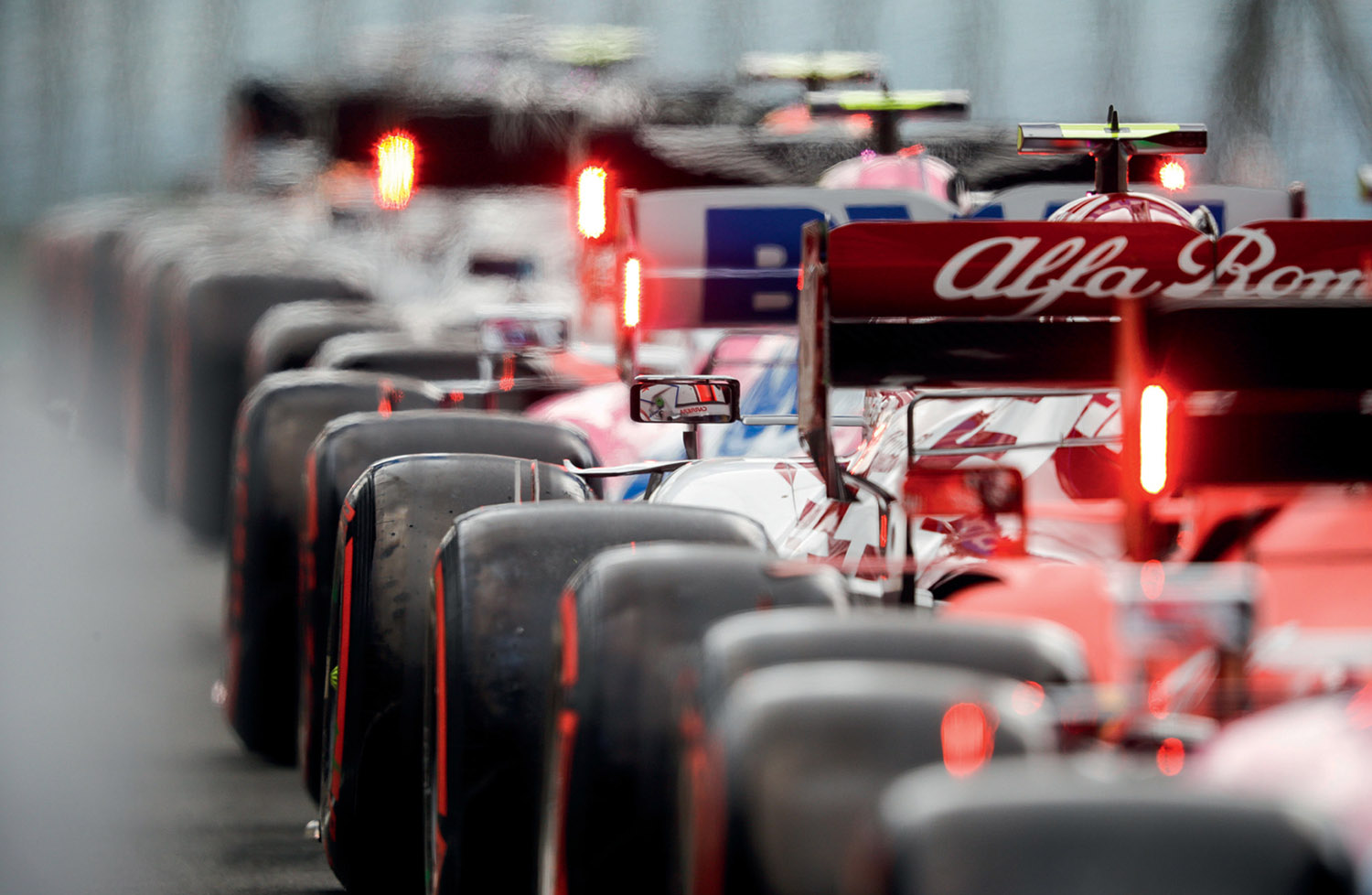Formula 1 by Peter Nygaard
ISBN 978-1-85443-320-6
Dalton Watson Fine Books © 2021
480 pages, 438 images, Hard cover
230 mm by 300 mm
US $89
Order here
Review by Clyde Berryman
Not everybody would toss aside the promising and seemingly more secure career of a lawyer in favor of becoming a Formula One Grand Prix photographer, but that is exactly what Danish author/photographer Peter Nygaard did in the mid-late 1970s. According to the Foreword of his book, Peter skipped the graduation ceremony of his law class at the University of Copenhagen to catch a flight to Rio de Janeiro to attend the Brazilian Grand Prix.
Initially bitten by the racing bug as a lad during a trip with his father to see the Swedish GP at Anderstorp, Sweden, Peter decided he would not look back after taking this decision. Today, some thirty-five years later, he is an established fixture on the F1 circuit and one of its best-known and respected photographers.
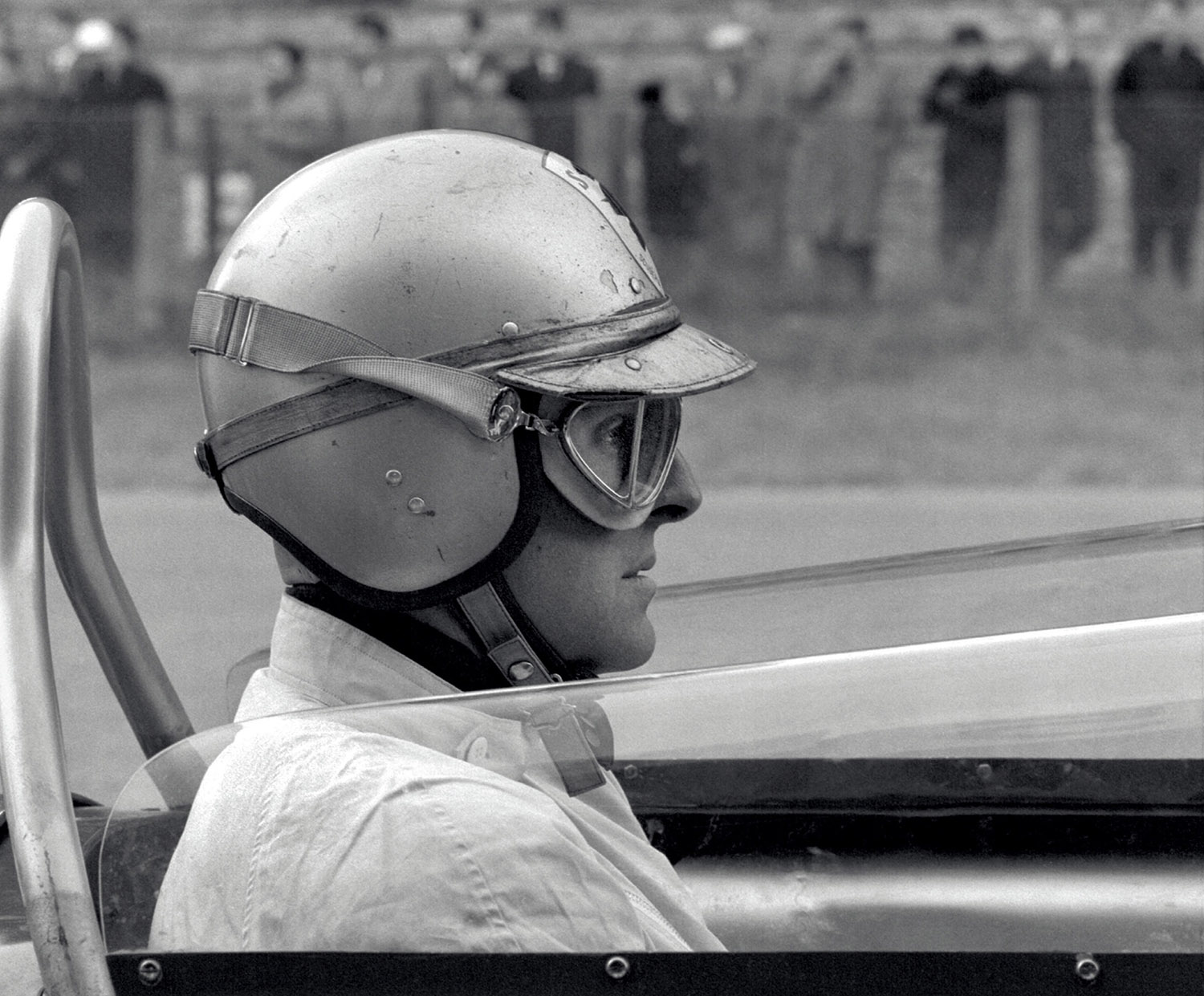
Wolfgang von Trips. Modern racing is driven by sponsors who would not tolerate Taffy’s tatty helmet.
Early in the 1980s, Peter made the savvy business decision of buying collections of photos from earlier photographers who had covered F1 racing during its first three decades. This was added to the photos he took himself, available through his own photo press agency called Grand Prix Photo (www.GrandPrixPhoto.com). This greatly enhanced his image archives and certainly helped him to produce this sizable photographic portrait of F1 from 1950 to 2021.
Formula 1, Peter’s first published book, is logically organized into decade-long chapters which each begin with a text section providing annual highlights, a generous photo section representative of that decade, a two-page bullet-summary of racing records established, and a precise survey of the changes in F1 technology. The last quarter of the book consists of biographical summaries of the F1 World Champions and summaries of the top ten drivers and top five constructors of each year. Taken as a whole, the book gives a concentrated visual focus to the changes which have taken place in F1: the car shapes and sizes, engines, driving suits, racing circuits, and even the atmosphere and background panorama of the sport.
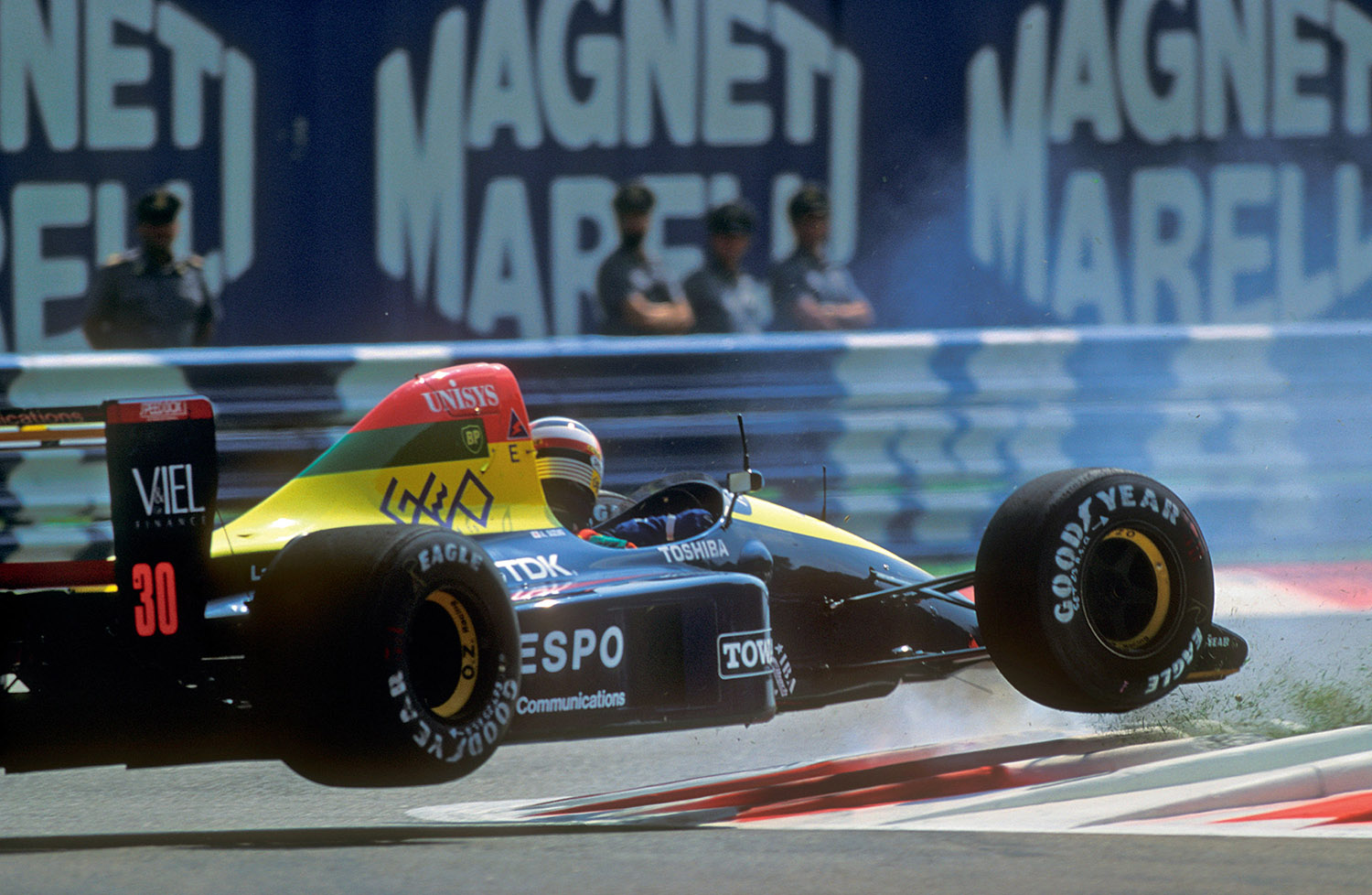
1990 modern era, a quick glance sees nothing special, a closer look reveals all four wheels are off the ground.
A short entry near the back which shows the evolution of driver helmets and of F1 steering wheels further reinforces this impression. Curiously, Peter adds a ‘leaving the road’ entry to this section as if to maybe suggest that even accidents or racing incidents have changed appearance over the years in F1. There certainly are more of these ‘shunts’ in modern times but it brought me to my next observation: when it comes to accidents in F1, Peter seems to have had an unusual knack for being in the right place at the right time to document some of the more spectacular collisions in modern Grand Prix racing. From Robert Kubica’s violent contact with the wall at Montreal (2007), Alex Wurz’s sideways-crunch at Suzuka (2007), Alonso’s aerial flight over the grid at Spa (2018), or Massa’s barrel-roll at the new Nurburgring (2014), Peter has captured them all at their most terrifying moments.
Peter’s photography takes full advantage of the capabilities of the modern digital, high-speed and powerful telephoto lens era. His images are, for the most part, up close and personal. The viewer is brought in amongst the pit crew during a pit stop, alongside the driver deep in his cockpit, right up to the rear-wing of the car in front, examining engine details or into action shots such as the car’s front tire skidding as smoke erupts from beneath. In contrast, there are a few more ‘distant’ or panoramic views among the black and white and color photo sections which chronicle the first three decades as seems to befit the celluloid film era. The book’s cover photo of Giorgio Scarlatti helping push his Maserati 250F onto the grid at Pescara in 1957 or the view of the starting grid of the 1967 German Grand Prix at the Nurburgring on pages 104-105 are two of my favorites in this regard.
Throughout, there are a fair number of photos of the drivers out of their cars, on podiums, or of other team personnel which gives balance to the human versus mechanical aspects of the sport. The photos of this earlier period are all attributed to ‘Grand Prix Photo’ and while the website does make mention of photographers Snowden, Cevernini and Leroy as the source of some of these images, it would still have been a nice touch if the original photographer, where known, had been identified in each caption.
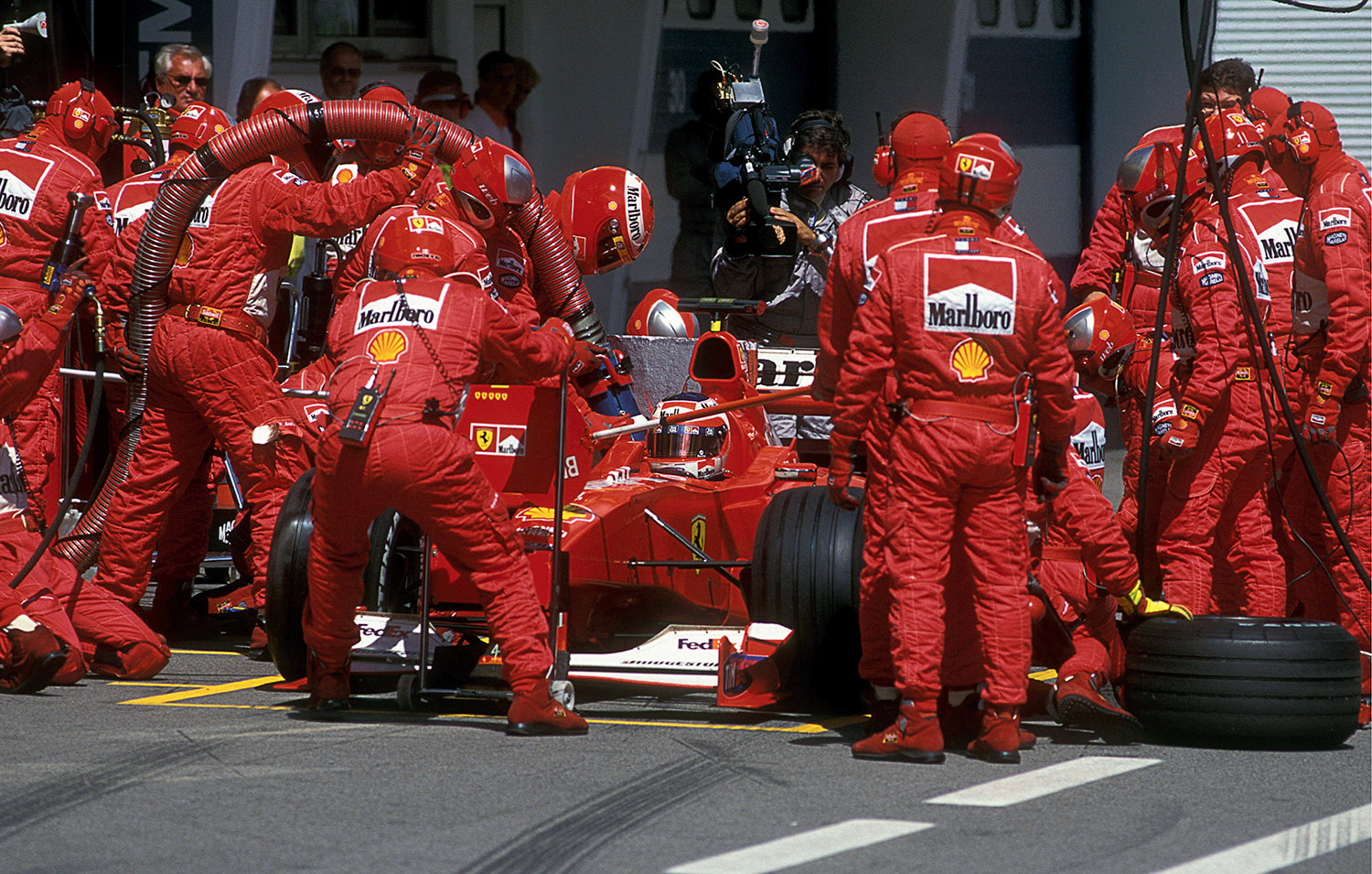
2001 Bringing color and action to the traditional Italian pit stop, today an orchestrated high speed perfect performance.
In sum, this book is a very strong addition to the library of any F1 enthusiast who wants to add to their photographic resources of the sport.
